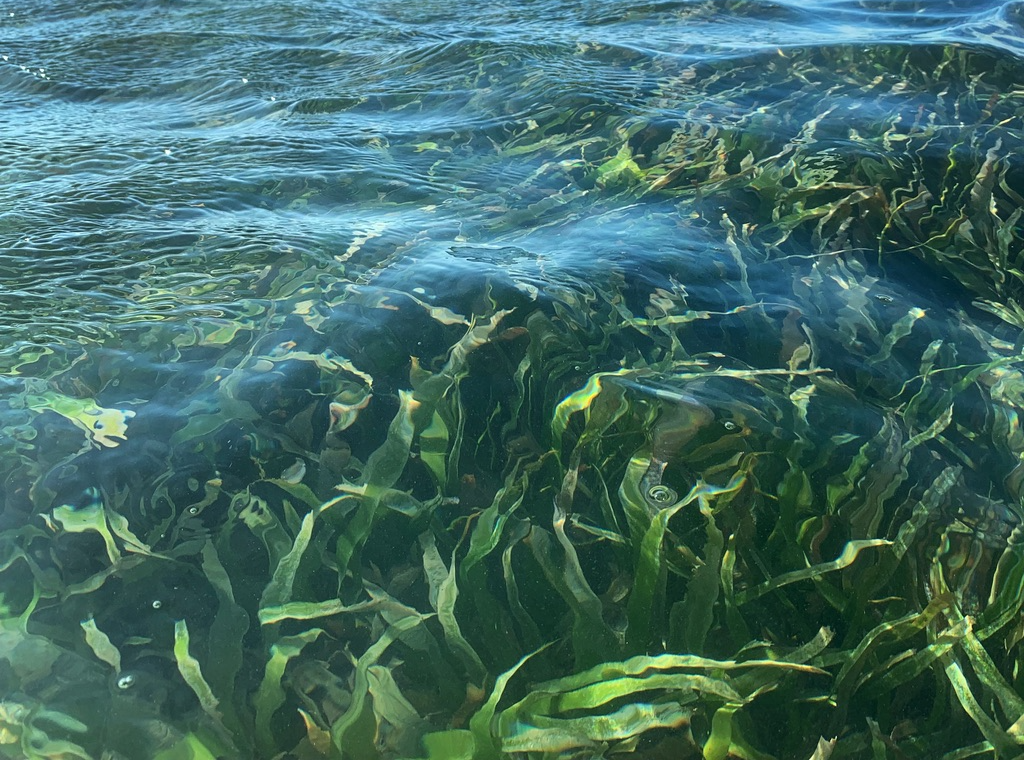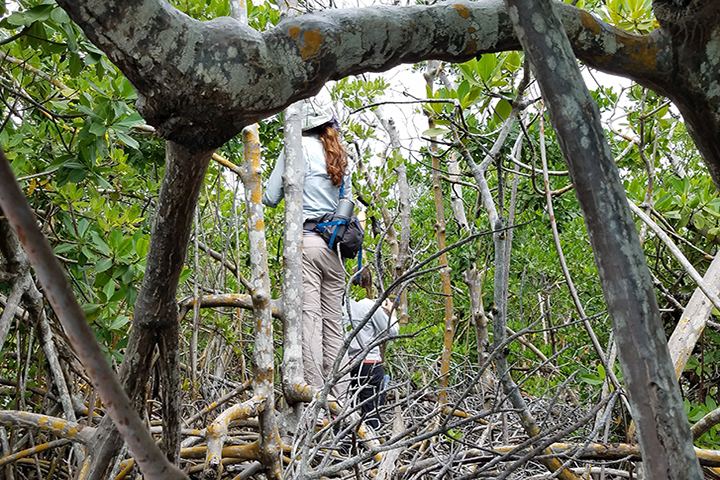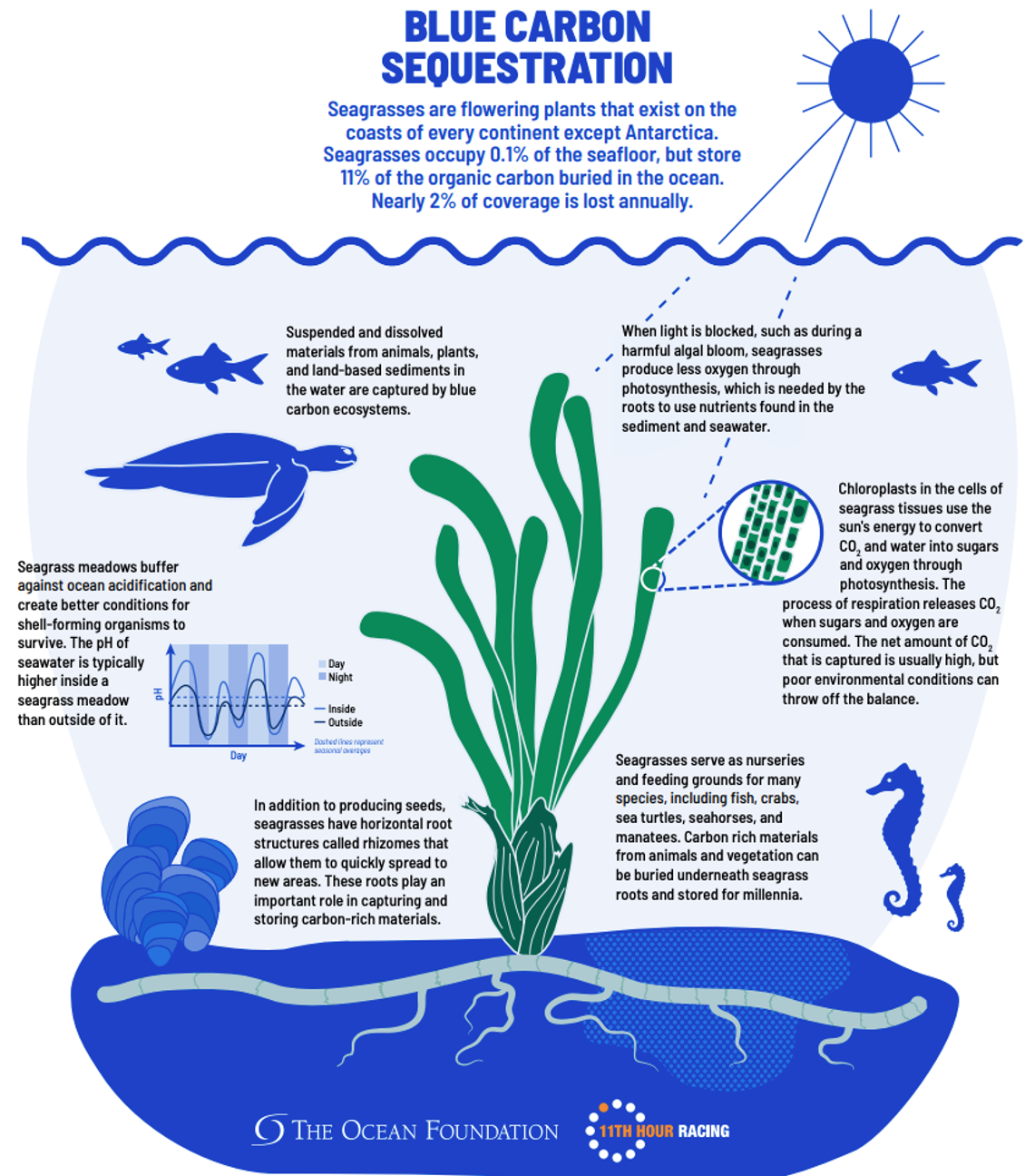First-Ever Carbon-Offset Initiative by U.S. Pro Football Team
The Takeaway: The Philadelphia Eagles football team will expand mangrove and seagrass restoration efforts at Puerto Rico’s Jobos Bay National Estuarine Research Reserve in order to offset travel-related emissions, in a partnership with the Ocean Conservancy and The Ocean Foundation.
The Philadelphia Eagles football team has agreed to restore seagrasses and mangroves at NOAA’s Jobos Bay National Estuarine Research Reserve in Puerto Rico, in order to offset carbon emissions stemming from team travel. The research reserve is an ideal site for this unprecedented pro team agreement, because it features abundant mangroves and seagrasses and is already engaged in restoration and carbon-capture efforts. The Philadelphia Eagles’ carbon-offset counting starts from the 2020 season. The team is partnering with the Ocean Conservancy and The Ocean Foundation on this project.
Eighty percent of project funds will go toward the restoration effort’s labor and supply needs. Ten percent will expand public education and scientific efforts, and 10 percent will support project administration and infrastructure.

Rich and sensitive ecosystem
The 2,817-acre Jobos Bay National Estuarine Research Reserve is a federally protected tropical ecosystem featuring mangrove forests and seagrasses that are super-efficient at capturing the “blue carbon” stored in the nation’s oceans and coastal ecosystems. Seagrass meadows account for just 0.1 percent of the world’s seafloor but store 11 percent of the organic carbon buried in the ocean. Mangroves and seagrasses limit potential damage from ocean acidification and fortify coastal communities against storm surge and hurricanes by dissipating wave energy. The vegetation also reduces flooding and helps to protect coastal infrastructure.

Restoration will benefit the research reserve’s delicate coral reefs and many endangered species that include the brown pelican, hawksbill sea turtle and green sea turtle, and West Indian manatee.
Puerto Rico might benefit economically from the project as well. In a previous report, NOAA economists found that $1 million invested in coastal restoration creates 17.1 jobs, on average.
NOAA and carbon capture
Through an earlier project, the Mangrove Coast Collaborative, a team of scientists, managers, and educators at the Jobos Bay Research Reserve have been combining map technology, assessments, decision science, and community input to help tropical reserves stand up to intensifying storm conditions. This work is aided by the NOAA Science Collaborative, which is jointly administered by NOAA and the University of Michigan.
NOAA’s National Estuarine Research Reserves and Science Collaborative also joined with partners to bring blue-carbon workshops, tools, and other aids to coastal communities and research reserves in 10 states. These aids are even more useful now that blue carbon is included in the U.S. greenhouse gas emissions inventory through the efforts of NOAA’s land cover change program. (2021)

Partners: Digital Coast, Jobos Bay National Estuarine Research Reserves, Philadelphia Eagles, Ocean Conservancy, The Ocean Foundation
PRINT